Do you know what to do to keep yourself from dying if you ever get shot?
Do you know how to keep your loved ones alive if they get shot?
What if you’re in a public place and a terrorist bomb explodes and now there are tons of mass casualties missing limbs and gushing blood?
Unfortunately, a standard Red Cross First Aid or general CPR class will NOT help in situations like this. You need to know tactical first aid that was developed specifically for battlefield injuries.
The World We Now Live In
Despite what anyone in the media says, it’s clear that the FedGov’s war in the Middle East — The Global War on Terror (GWOT) — is also being fought in America.
In short, many public places are now targets of opportunity for guerrilla warfare and you’re now a soldier in an asymmetric battlefield.
Unfortunately, because you’re a civilian and you’re not actively hunting terrorists, you don’t get to choose when the fight happens in this battle.
It will choose you.
It could be a mass shooting the likes of San Bernardino or the Orlando Nightclub or the small unit terrorist attacks in Paris. Or it could be a terrorist bombing, you just don’t know.
Along with training to defend yourself both unarmed and with various forms of tools — to take life if necessary — you should also train yourself to save life if necessary.
Having Life Saving Medical Skills Is Just Simply Good Common Sense!
Even if you’re not ever involved in a terrorist attack …
Or even if you never have to get in a life-or-death fight with anyone …
The truth is that having life-saving medical skills is just good common sense.
How many of us know someone that has had a MAJOR medical accident — like a saw cut off a person’s fingers? Or a chainsaw cut into a person’s leg?
Or how many times have you driven by a gruesome accident on the side of the road?
Having life-saving medical skills in your back pocket just makes too much sense for you to ignore it, especially when:
1. The information is FREE for you to learn how to save lives.
2. The medical gear is cheap and easy to learn how to use.
Introducing Tactical Combat Casualty Care (TCCC)
Tactical Combat Casualty Care (TCCC) guidelines were developed by USSOCOM (United States Special Operations Command) to properly train non-medical personnel to deal with the preventable causes of death in the field. Now they’re being used by all of the U.S. military.
We’ll discuss more about TCCC later, but one of the most important things to understand is that the #1 cause of preventable deaths in combat is Hemorrhage from extremity wounds — responsible for 60% of combat deaths.
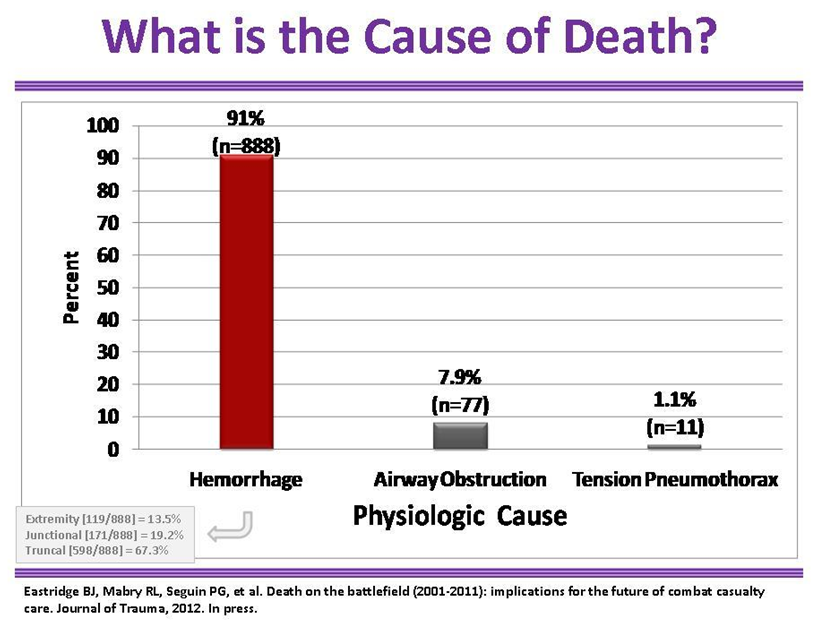
That means it’s super critical to stop massive bleeding in gun fights, which makes sense right? Bullets punch holes in humans, and humans bleed. Sometimes it’s a lot. Too much blood loss you die.
The good news is …
Because of these protocols, combat survivability is at an all-time high for US Soldiers. In the pic below you can see how the percent of the wounded who die in combat is now at the lowest it has ever been, mainly because of TCCC.
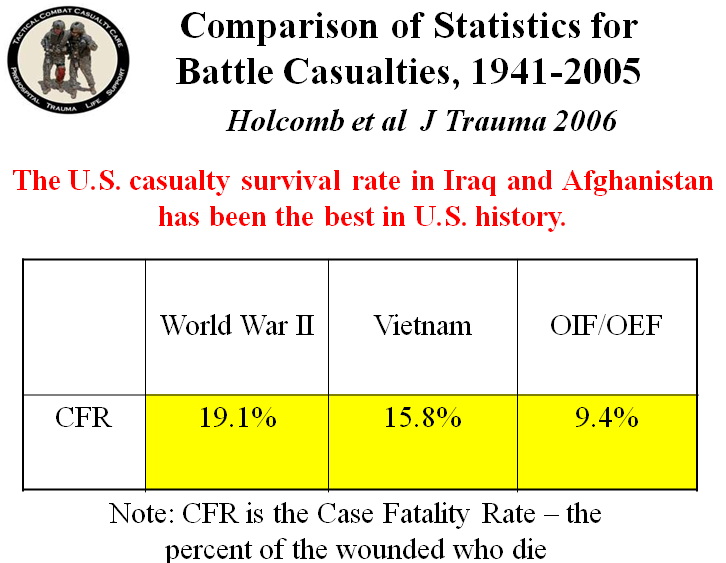
We may not be in combat, but as prepared gun owners, we need to know civilian TCCC.
Introducing: The M.A.R.C.H. Acronym For Civilians
When it comes to TCCC, you can actually get all the guidelines free online from the US Army manuals or other websites which I’ll link to in just a moment.
If you’ve ever had a medical class, you may be familiar with the ABC acronym that stands for “Airway, breathing, circulation”. Well, forget all that.
The new acronym to remember is M.A.R.C.H.
Massive hemorrhage – control life-threatening bleeding.
Airway – establish and maintain a patent airway.
Respiration – decompress suspected tension pneumothorax, seal open chest wounds, and support ventilation/oxygenation as required.
Circulation – establish IV/IO access and administer fluids as required to treat shock.
Head injury/Hypothermia – prevent/treat hypotension and hypoxia to prevent worsening of traumatic brain injury and prevent/treat hypothermia.
Specifically, as a civilian walking around, living your every day life, you may not have the medical tools or resources to take care of every one of these things (for example, the best way to open an airway is to stick this little tube called a Nasopharyngeal Airway (NPA) up a person’s nose. You should know how to do it, but aside from a full-size blow-out kit in your shooting bag, you probably won’t carry one around).
The #1 thing you CAN focus on — and easily carry medical supplies for — is stopping Massive Hemorrhage (aka stopping bleeding).
How To Stop Massive Bleeding With Pressure Dressings
That’s the key. Because the number one cause of preventable battlefield deaths is bleeding to death, you have to stop the bleeding.
According to Greg Ellifritz, (emphasis mine): “Direct pressure is the standby solution. It works well and will stop bleeding in about 95% of battlefield injuries. For it to work however, direct pressure must be hard and sustained. That limits the rescuer to treating only one casualty at a time. It also may be difficult to perform while exhausted or while you are carrying your casualty to safety.”
That’s why you need to use pressure dressings. You can put them on a wound, and apply the pressure required to stop the bleeding without holding it. Then you can move on to treating someone else.
3 Pressure Dressing/Compression Bandages, Where To Buy Them, And How They Work
There are different types of pressure dressings and these are some of the most well known (Greg also likes and recommends these). Get the one you like and then practice with it so you know how to to use it.
1. Cinch Tight Compression Bandage:
You can buy the Cinch Tight on Amazon and here is how it works:
2. Israeli Bandage:
The Israeli bandage is really popular with preppers. I’m not sure why, maybe it’s because it’s Israeli? Either way, it too is a proven pressure dressing design, you can buy it on Amazon here, and here’s how to use it:
3. Olaes Bandage:
I think the Olaes Bandage is one of the most unique of these and very well thought out. With this bandage you get a compression bandage, a pressure cup that can be used as an eye cup, a bunch of rolled gauze if you want to plug two holes (useful for entry and exit wounds), and occlusive plastic covers for sucking chest wounds. Pretty neat. And they’re not more expensive like you would think, you can buy them on Amazon and here’s how to use it:
You Can Also Use Improvised Pressure Dressings
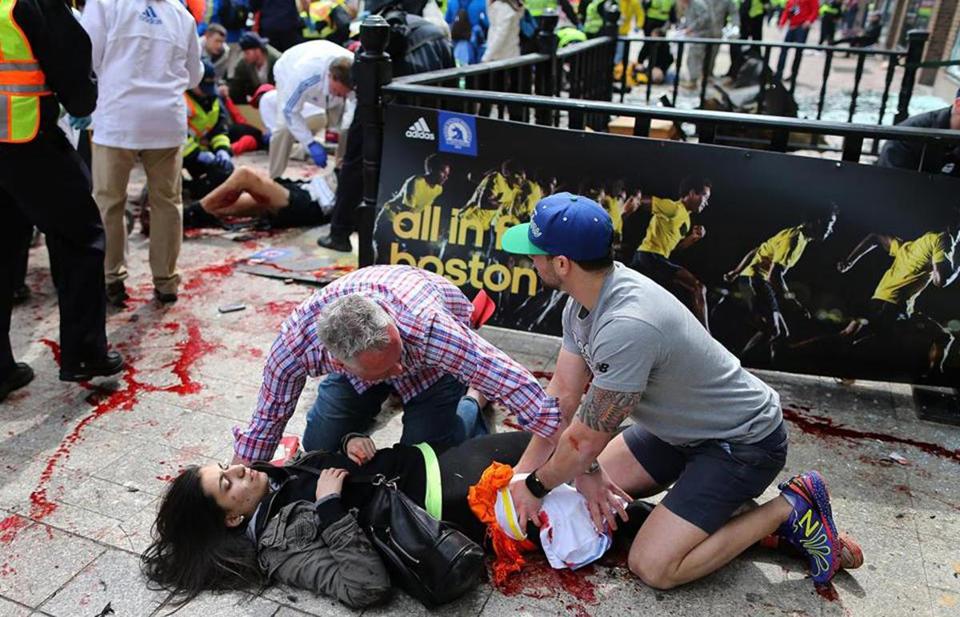
Because it’s only practical to carry maybe one or two bandages on your person (though you could certainly keep a lot more in easy-to-get-to places like your bag, your car, etc) you might have to improvise a lot of pressure dressings.
Think of something like a mass casualty event from a terrorist bombing where a lot of people need help.
The best stuff to make improvised pressure dressings is a bunch of medical gauze pads and something like ace bandages or duct tape or other, stronger roller gauze you can wrap around.
According to the US ARMY study guide “Improvised bandages may be made from strips of cloth. These strips may be made from T-shirts, socks, or other garments.”
Basically any fabric you can get in (as in stuff in the hole) and then on the wound and then wrap another item around to cause enough pressure to stop the bleeding will help.
How To Stop Massive Bleeding With Tourniquets
They used to think that tourniquets did not save lives. That it was a last resort option.
And they used to think that anywhere you put a tourniquet, you would lose the limb below that point.
However, since the TCCC protocols were adopted, Tourniquets have been saving lives left and right in combat.
What’s more: there have been NO loss of limbs due to tourniquet use throughout the entire GWOT — with thousands of lives SAVED by the use of tourniquets.
Get tourniquets and learn how to use them!
Tourniquets are used under these three conditions as per Greg Ellifritz again:
– When bleeding can’t be stopped with direct pressure or a pressure dressing
– As a first line whenever you see spurting arterial blood from an extremity
– On any traumatic amputation
The #1 rule to remember with tourniquets is “high and tight”.
That means on whatever extremity, you get as close to armpits and crotch as is possible. You just stick these on right on top of the person’s clothes.
The Two “Official” Tourniquets You Should Know And Have As Primary Tourniquets
The committee that handles all the TCCC standards and does the testing of gear for the military recommends two types of tourniquets. They’re both windlass types. For this reason, these two types of tourniquets are the most well regarded and most expensive (though they’re not actually expensive, in any sense of the word, when you consider they could easily save your life or the life of a loved one).
NOTE: Because they are the most well known tourniquets, there are known to be “fakes” or knockoffs online. Probably made in china. Probably made out of cheaper plastic that will break when you try to use it. Each one of these tourniquets should cost around $30 at the time of this writing. If it’s a LOT cheaper than that … you’ve been warned.
Consider these your primary tourniquets.
The two most well-regarded types of tourniquets, and approved by the official committee that handles TCCC guidelines are these:
1. The Combat Application Tourniquet (CAT).
This is said to be the easiest to self-apply. It uses a plastic windlass. You can buy it on Amazon and here’s how to use it:
2. The Special Operations Forces-Tourniquet (SOF-T)
This one is a little more complicated to put on, so some say it’s harder to use on yourself, but it also uses a metal windlass. That makes it a little more durable and may be a better choice for large limbs like the legs. You can also buy it on Amazon, it also comes in a “wide” version, and here’s how to use it:
The Two Other Types of Tourniquets You Should Know And Have As Backups …
Because the committee in charge of official TCCC guidelines only recommends the CAT or the SOF-T at this time, many people feel that the following tourniquets are not worthy of your time.
I think that might be a mistake and here’s why …
While I wholeheartedly recommend carrying a mid-to-full-size handgun like a Glock 19 for your every day carry, I also realize that a .32 ACP pocket gun that you actually carry every day is going to be way more useful than the Glock 19 you left at home because it was too big or hard to carry or for whatever reason.
See where I’m going with this?
These two types of tourniquets are cheaper, smaller, easier to carry, and in some unique situations they may actually work better.
Plus, they can do more than act as tourniquets. They can double as pressure dressings.
Ideally, you could carry one of the primary tourniquets with you and have one or more of these as backups too (either on your person or in a bag, in the car, with other family members, etc).
Finally, they are generally much, much cheaper. You could buy three times as many of these tourniquets as you can the primary tourniquets for the same price. That means you can stock more of them with family members, in cars, in go bags, in purses, in your desk at work, etc.
1. The TK-4 Tourniquet
This has been around for a long time and is pretty simple to use. The main drawback is there is no windlass, but you can use this to stop bleeding. The main benefit to this one is it’s cheap, its small and it’s light. That means you have no excuse not to buy one and carry it. You can buy it on Amazon here. Here’s how to use it:
2. The SWAT-T Tourniquet
The SWAT-T tourniquet is a newer tourniquet, but it’s quickly becoming popular. In fact, you’ll find it in a lot of “ready made” kits. I’m not sure if that’s because the name ‘sounds’ tactical or because it’s so low profile. Again, the advantages to the SWAT-T are that it is cheap, low profile, and light — which means you have no excuse not to buy and carry one. You can also buy it on amazon here. Here’s how to use it:
Other Benefits of Secondary Tourniquets
As the SWAT-T video pointed out you can use the SWAT-T (and also the TK-4 for the most part) as a tourniquet, pressure dressing, and as elastic wrap among numerous other things …
Plus, they’re both easy to use.
What’s more: if you check out the SWAT-T website, you’ll see numerous reports where a SWAT-T was used successfully high up on extremities where a regular windlass tourniquet could not go … OR … because it didn’t “fit” that part of the body close enough to get tight enough.
SPECIAL NOTE TO PARENTS AND DOG LOVERS: Also of note, the SWAT-T website has numerous reports of the SWAT-T being used on small children and pets when a regular windlass tourniquet would not get tight enough because of the small limbs of these aforementioned beings. The “stretch and tuck” of the SWAT-T means it will fit any size limb, even SMALL limbs!
Finally, the SWAT-T website reports 3 of them were used successfully after the Boston Marathon blast proving that it’s a viable choice for civilian EDC.
Again, this is one of those things where I need to inform you that the “official” TCCC guidelines do NOT recommend the TK-4 or SWAT-T tourniquets … but I also think that the private industry often moves faster than the military or any “committee” for that matter.
Look at how practical shooting sports are influencing what special operators are carrying/using in combat — then it gets adopted by big army YEARS later. Sometimes — actually many times — the private industry is ahead of the curve with better solutions to known problems and if you wait for “official” endorsement you may be wasting valuable time, money, and/or resources you could be using to save lives.
That said, you can hedge your down side (the down side being the secondary tourniquets really DO suck and won’t save lives) by knowing how to use ALL the tourniquets listed — and treating these options like the Glock 19 vs pocket gun example — primary vs secondary.
What About Improvised Tourniquets?
In short, they’re hard to do right …
Greg has an entire article about why your belt sucks as a tourniquet.
But, yes, it’s possible to make improvised tourniquets. In this article, I show you How To Make An Improvised Tourniquet With Your Car Keys [Step-By-Step].
The bottom line is it CAN be done, but it’s a little harder than it looks in movies — where the hero straps on a belt and it’s good. The #1 thing to remember about improvised tourniquets is they MUST be at least 1 inches — preferabbly 2 inches — wide because that works better to stop blood flow AND it will protect against tissue damage (aka don’t use boot laces or thin rope or something).
How To Stop Massive Blood Loss With Hemostatic Agents …
Hemostatic agents are chemical blood stoppers.
If the wound is some place like a neck, groin, or shoulder injury where you can’t use a tourniquet — then you might need to use a hemostatic agent.
The older types of these burned skin. The newer ones are better, but it’s still preferred to use a pressure bandage or tourniquet if possible.
Again, you only want to use these if you can’t fit a pressure dressing or tourniquet on the spot in question.
You’ll also want to apply pressure after applying these.
1. Quick Clot Combat Gauze
Quick Clot seems to be the really popular one. Another benefit of this product is that they come in flat packs that are pretty low-profile, making them easier to carry on your person. You can click here to buy them on Amazon and here’s how to use it:
2. Celox Trauma Gauze
Celox is very similar, you can buy it here on Amazon and here is how to use it:
Here’s Where To Get Additional (FREE) Training In Tactical First Aid
The best part?
You can learn more about these life-saving skills for FREE!
Simply check out the resources available online.
Click here to see the Tactical Combat Casualty Care Course all online.
Specifically, they have the TCCC course for Medical Personnel there and also the “TCCC for All Combatants” which is probably what you need. Downloadable guides, powerpoint, you name it, it’s all free for you.
Where To Get LIVE Training In These Skills (The Best Option!)
Also, there are a number of good courses you can take for live training where you can get hands on practice and learn these skills in person in as little as one day.
Much like guns and combatives, you should take a live course.
1. Greg Ellifritz offers a great 1-day Tactical First Aid and System Collapse Medicine course that’s PERFECT for the Prepared Gun Owner. (As a bonus, it covers “system collapse” medicine topics — something that most preppers would find very, very interesting. Full AAR to come as I’ve personally taken this class.)
2. I hear good things about Dark Angel Medical. (I have not taken any of their classes)
3. Caleb from Lone Star Medics is a name that gets thrown around a lot too. Their “Medicine X – EDC” class looks exceptional for the Prepared Gun Owner. (I have not taken any of their classes, but I would like to take the aforementioned EDC class).
You absolutely can NOT go wrong taking a class with anyone of these people.
Heck, you can’t go wrong just buying some tourniquets and pressure dressings and practicing on your family members.
The bottom line is that learning how to save a life is just as important (if not more important!) than learning how to take one. And it has never been more affordable, more easy, and more accessible to get the life-saving skills AND tools you need — so do it!



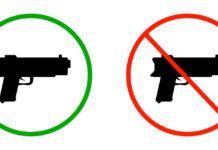
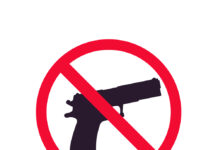


![Are Compensators Worth It? [Video]](https://preparedgunowners.com/wp-content/uploads/2025/07/Depositphotos_815431992_S-218x150.jpg)




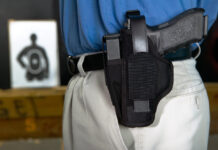
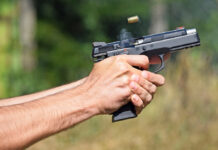
![Would-Be Robber Takes The Tueller Drill Challenge [Video]](https://preparedgunowners.com/wp-content/uploads/2025/10/Depositphotos_50626839_S-218x150.jpg)

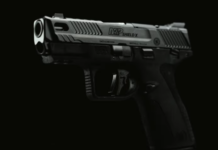
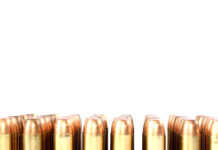
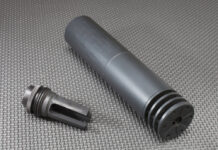
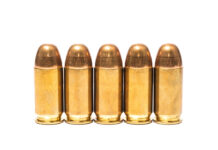

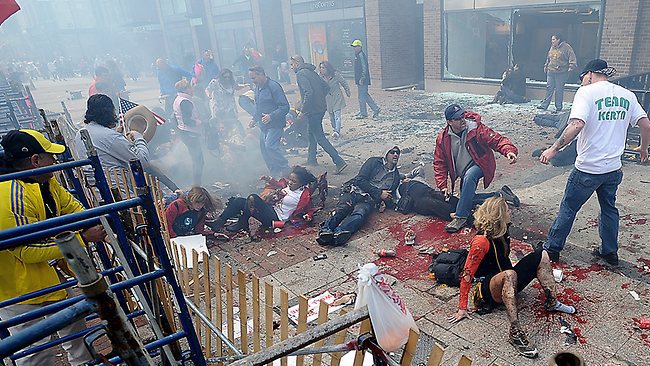



















![Optic Ready vs Milled slides? [Video]](https://preparedgunowners.com/wp-content/uploads/2024/02/image-3-100x70.png)
![[Checklist] What Gear You Need To Take Pistol, Rifle & Shotgun Training Courses [Video]](https://preparedgunowners.com/wp-content/uploads/2023/07/Depositphotos_275087632_L-100x70.jpg)
![What is in Carter’s 2023 EDC? [Video]](https://preparedgunowners.com/wp-content/uploads/2023/07/Depositphotos_146856137_L-100x70.jpg)



Great info and probably very timely as well. Who knows what’s around the corner next day, week, month. Be prepared!
Personally, I’d be cautious about recommending the TK-4. The military no longer approves the use of these after they suffered catastrophic failure in testing. Since those tests, H&H Medical supposedly improved it but only the TK-4L (the one with the improved strap is now colored black).
When discussing the use of an improved TQ, why does no one ever mention the use of an item most people always have on them? Use your t-shirt/shirt. Flat fold it (don’t roll it) to approximately 2″-3″ wide. Of course an improvised TQ is really not a TQ without the use of an improvised windlass.
Don’t forget the need to address wounds to the torso. Something that civilians will suffer more often than the military because civilians don’t usually wear body armor.
Yeah, I’m having a REALLY hard time tracking down that info on the TK-4. All I can find is rumors and stories, etc … Do you have any sources for me?
Great tip on the T-shirt though!
That said, a TK-4 used as a tourniquet is going to be a HELL of a lot better than a folded up T-shirt right? So if you can stick a tiny TK-4 in a pocket … no it’s not ideal … but it’s a compromise like we carry handguns even though they suck because we can’t carry a rifle. Or in other words, something is better than nothing.
Great info, well detailed and illustrated. Caleb!
Rob, i wrote a similar EWT article a year or two ago for another blogsite. And I discussed alternative TQs.
T-shirts are excellent and lend themselves well to securing without a twister/lock because you can fold under for a good knot. But my best preference for an alternative expedient extremity TQ is your shoe lace. Not everybody wears T-shirts, but most do wear shoes. and most have laces, and even the shorter ones will work.
“Yeah, I’m having a REALLY hard time tracking down that info on the TK-4. All I can find is rumors and stories, etc … Do you have any sources for me?”
Go to Page 19 to see the failure of the TK-4 and the old TK-4L. http://www.ratchetingbuckles.com/wp-content/uploads/2015/07/EVAL-2012-12-Phase_I-m2-.pdf
“Great tip on the T-shirt though!”
It doesn’t have to be a just a t-shirt. Any shirt will work, a polo, a t-shirt, a buttoned shirt (but unbutton it first). Per my own home experiments, I have found that on larger thighs you may need to spit the t-shirt from neck to tail for it to be long enough. Long-sleeve shirts work best for going around thighs as the sleeves are smaller and easier to form the knots. Flat folding the shirt as opposed to rolling it allows it to maintain a wide, flat surface which makes a better TQ and is less painful (at least in my own experience). Mass shooting in a mall, then run into the nearest clothing store for t-shirts/shirts, sturdy clothes hangers for improvised windlasses and long socks for improvised pressure dressings and plastic shopping bags for use as improvised occlusive dressings. Realizing, however, that improvised TQs are never going to be as effective as a commercial TQ. A couple of recent studies on improvised TQ and windlass showed that a bandana was only effective 40% of the time and a t-shirt was only effective 68% of the time. And that is in a controlled laboratory experiment.
“That said, a TK-4 used as a tourniquet is going to be a HELL of a lot better than a folded up T-shirt right? So if you can stick a tiny TK-4 in a pocket … no it’s not ideal … but it’s a compromise like we carry handguns even though they suck because we can’t carry a rifle. Or in other words, something is better than nothing.”
Correct, but I would go with the new TK-4L (the one with the black strap). Personally, I think the SWAT-T is a better option and is as compact as the TK-4L. If you want a small kit, I would carry a SWAT-T and a couple of petrolatum gauzes.
My take on a compact trauma kit. https://www.youtube.com/watch?v=bVrmS6B-dfM
Rob
Thank you so much for adding to the conversation!
These are some good tips and thanks for the clear link to the TK-4 info
I’ve taken numerous classes from Caleb Causey, including Med-X EDC. Caleb is knowledgable, able to present and articulate the subject matter well (which means he knows the subject matter very well), and the best thing is that he’s also a student – always keeping up with the field, with products, with new information, always seeking to improve. But he also doesn’t just jump onto trends: he knows he’s teaching life-saving skills, and that’s not a place to be trendy, but a place to be solid and smart.
In fact, I’m looking at taking his classes AGAIN in 2017 because redundancy fosters learning.
Drink Water.
Drink water? LOL
John (I like your blog btw) that’s awesome to hear. Glad you have some feedback to point people in the right direction. Damnit. Between the Med-X EDC class and some of the instructor’s you guys are hosting out there in Bastrop … I might have to make a few TX trips soon 🙂
“Drink Water”. It’s a Caleb Causey thing – take a class from him and learn why. 🙂
And yeah, come on out to KR Training (we’re just north of Bastrop, to be technical). Karl’s always got a great lineup of guest instructors, and 2017 is lining up to be another great one — including lots of Karl’s own offerings (Karl’s a fantastic instructor in his own right, and I’m not just saying that because I work for him, as his industry reputation speaks for itself).
Hope to see you on the range!
But don’t drink TOO MUCH Water, John. You’ll ruin your kidneys. Beer is better.
Bourbon. 😉
[…] via Greg Ellifritz, comes a really terrific article on dealing with traumatic injuries for those of us who don’t wear a…. They give a shout-out to the SWAT-T as more than just a tourniquet, and they point out that it […]
[…] What You Absolutely MUST Know About Tactical First Aid (Civilian TCCC pt 1) […]
[…] My friend Caleb Causey recently wrote a pretty good article about the idea of “Tactical Combat Casualty Care”. I hate those military terms when used in the civilian world, but it definitely separates the kind of knowledge I believe you need from the stuff typically taught in most first aid courses! Caleb tells you the skills you need to know, why you need to know them, and the gear you need to acquire to put your knowledge to use when you need to. Good information that is far more likely to save a life than the gun you carry! […]
Comments are closed.